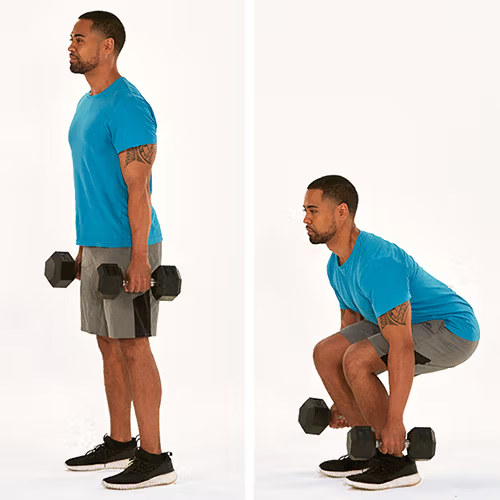🏀🏊💪💦
How to Increase Your Height: Is There Anything I Can Do?
Though height is mostly determined by your genetics, there are several steps you can take to appear taller and optimize your growth potential.
1. Eat a balanced diet
During your growing years, it’s crucial that you get all of the nutrients your body needs.
Your diet should include:
- fresh fruits
- fresh vegetables
- whole grains
- proteins
- dairy
You should limit or avoid foods containing high amounts of:
If an underlying medical condition, or older age, is causing your height to decrease by affecting your bone density, consider increasing your calcium intake. It’s often recommended that women over age 50 and men over age 70 should consume
Vitamin D also promotes bone health. Common sources of vitamin D
2. Use supplements with caution
There are only a few cases where supplements may be appropriate to increase height in children and combat shrinking in older adults.
For example, if you have a condition that affects your human growth hormone (HGH) production, a doctor may recommend a supplement containing synthetic HGH.
Additionally, older adults may be advised to take vitamin D or calcium supplements to reduce their risk of osteoporosis.
In all other cases, you should avoid supplements with promises about height. Once your growth plates become fused together, there’s no chance that you can increase your height, regardless of what the supplement label advertises.
3. Get the right amount of sleep
Occasionally skimping on sleep won’t affect your height in the long term. But if during adolescence you regularly clock less than the recommended amount, it may lead to complications.
This is because your body
Here is how much sleep is
- Newborns up to 3 months old: 14-17 hours
- Infants 4-12 months old: 12-16 hours
- Toddlers ages 1-2 years: 11-14 hours
- Young children ages 3-5 years old: 10-13 hours
- Children ages 6-13: 9-12 hours
- Teenagers ages 14-17: 8-10 hours
- Adults ages 18-64: 7-9 hours
- Older adults over age 65: 7-8 hours
Getting extra sleep may even increase HGH production, so go ahead and take that power nap.
4. Stay active
Regular exercise has many benefits. It strengthens your muscles and bones, helps you maintain a moderate weight, and promotes HGH production.
Children in school should get at least
- strength-building exercises, such as pushups or situps
- flexibility exercises, such as yoga
- aerobic activities, such as playing tag, jumping rope, or biking
Exercising as an adult has its benefits, too. In addition to helping you maintain your overall health, it can also
To reduce your risk, try walking, playing tennis, or practicing yoga several times a week.
5. Practice good posture
Poor posture may make you look shorter than you actually are. And over time, slumping or slouching can also affect your actual height.
Your back should curve naturally in three places. If you regularly slump or slouch, these curves may shift to accommodate your new posture. This can cause pain in your neck and back.
Being mindful of how you stand, sit, and sleep is key. Talk with a doctor about how you can incorporate ergonomics into your daily routine. Depending on your needs, a standing desk or memory foam pillow may be all that’s needed to correct your posture.
You can also practice exercises designed to improve your posture over time. If you’re unsure of where to begin, talk to a doctor. They can help develop an exercise routine that’s right for you.
6. Use yoga to maximize your height
If targeted posture exercises aren’t your thing, give yoga a try. This whole-body practice can strengthen your muscles, align your body, and help with your posture. This will help you stand taller.
You can practice yoga in the comfort of your own home or in a group setting at your local gym or studio. If you aren’t sure where to start, search for a yoga routine on YouTube or try some poses for beginners.
Some popular poses to improve posture include:
Want to Jump Higher? Follow This Guide
By Jenessa Connor
High-flying leaps have led to some of the most iconic moments in sports: Nate Robinson clearing teammates to win dunk contests, Cristiano Ronaldo flying head and shoulders above opponents for a header, or Pete Sampras elevating to put away a smash at the net.
However, jumping (and figuring out how to jump higher) isn't a skill reserved only for pro athletes. Jumping, just like running, squatting, skipping, and throwing, is a fundamental human movement, explains Jack Coxall, CSCS.
"Being able to jump — and jump correctly — is not only a great skill to have in the bag, but it has so many carryovers to other things," Coxall says. "This includes power development and strength development, both of which decrease with age; absorption of force, which is related to injury prevention; coordination; and increased bone density."
In other words, time spent learning how to jump higher is time well spent.
From pre-workout to protein and everything in between, elevate your results with LADDER. Shop all premium supplements.
***
10 Exercises to Help You Jump Higher
"Jumping is clearly a lower-body dominant exercise," Coxall explains. "It requires the ability of your quadriceps, hamstrings, glutes, gastrocnemius, and soleus to produce force to get you into the air. However, jumping isn't limited to this. Your core plays a vital role in order to keep you stable on take-off and landing. The musculature of your arms is required for balance."
Training to jump high should include movements that build strength, like deadlifts and squats, as well as plyometric moves, like tuck-ups and box jumps. "Improving power for one exercise isn't limited to just doing that exercise; other power movements like slams, throws, and other types of jumps will all help your vertical jump," Coxall says.
Ready to jump higher? Try incorporating some of the following exercises into your workout routine.
1. Tuck-ups
- Stand with your feet hip-width apart and lift your fully extended arms, palms down, to chest height.
- Bend your knees in a quarter squat and, exploding off the balls of your feet, jump straight up in the air.
- As you jump, pull your knees up toward your chest. Try to touch your knees to your palms.
- Land softly with your feet hip-width apart and your knees slightly bent.
2. Frog jumps
- Stand with your feet slightly wider than shoulder-distance apart, feet turned out.
- Keeping your chest up and your lower back flat, push your hips back to squat down as low as possible, touching the floor between your feet with your fingertips if you can.
- Swing your arms forward and up as you jump as high as possible.
- Land softly, and immediately drop back down into a squat to begin your next rep.
3. Alternating step jumps
- Stand tall with your arms by your sides and your left foot on a bench so that your hip, knee, and ankle are all bent 90 degrees.
- Keeping your chest up, shoulders back, and core braced, drive through your left foot while swinging your arms up and pushing your body up with enough force for the left foot to leave the bench.
- Switch feet in the air, landing with your right foot on the bench and your left foot on the floor. Continue alternating legs with each rep.
4. Holmsen screamer lunges
- Step back into a reverse lunge with your right leg, toes pointed forward, left foot flat, ball of your right foot on the floor. Your right arm should be forward and your left arm back. This is the starting position.
- Drive your right knee up and forward explosively, jumping into the air as high as possible while keeping your left leg straight and switching the position of your arms, so that your left arm is now forward.
- Land softly on your left leg and return to the starting position.
- Do equal reps on both sides.
5. Box jumps
- Stand facing a box, with your feet hip-width apart. Bend your knees into a quarter squat, bringing both arms behind you.
- Swing your arms forward and jump up and onto the box, landing with your knees bent and both feet on the middle.
- Stand up, then step down from the box one foot at a time.
6. Weighted jump squats
- Holding a dumbbell with both hands in front of your chest, stand tall with your feet shoulder-width apart.
- Keeping your chest up and core braced, push your hips back, and lower your body until your thighs are parallel to the floor.
- Rise back up explosively, jumping straight up.
- Land softly and with bent knees, avoiding landing on flat feet, then immediately lower yourself into your next rep.
7. Dumbbell squats
- Stand with your feet hip to shoulder-width apart, holding a pair of dumbbells at arm's length by your sides.
- Keeping your back flat and core braced, push your hips back, bend your knees, and lower your body until your thighs are parallel to the floor.
- Pause, then push yourself back up to the starting position.
8. Dumbbell push presses
- Stand tall with your feet hip- to shoulder-width apart holding a pair of dumbbells by your shoulders, palms in and elbows tucked in close to your body.
- Keeping your back flat and core braced, push your hips back and bend your knees, lowering yourself into a quarter-squat.
- Push up explosively with your legs as you press the weights directly above your shoulders. Keep your biceps close to your ears.
- Lower the weights back to the starting position, and repeat.
9. Romanian deadlifts
- Stand with your feet shoulder-width apart and parallel, holding a pair of dumbbells in front of your thighs, palms facing you.
- Draw your shoulders back, unlock your knees and engage your core as you slowly hinge at your hips, sending your butt back to the wall behind you.
- Maintaining your lower back's natural arch, lower the weights until your torso is nearly parallel to the floor. Keep your head neutral and the weights close to your body throughout the movement.
- When you can't descend further without rounding your back (you should feel a deep stretch in your hamstrings), pause, squeeze your glutes at the top, then push your hips forward to return to the starting position.
10. Wall ball exercise
- Stand about two feet away from a wall with your feet hip-width apart. Keep the wall ball between your hands at chest height. Squeeze your elbows into your sides.
- Sink into a squat until the crease of your hip is at or below your knees, while maintaining a neutral arch in your spine. Keep the ball close to your chest on the way down.
- Keeping your chest up, push your body away from the floor and throw the ball at the wall above your head, aiming for a spot about 8 feet off the ground.
- Catch the ball following contact with the wall and sink back into your next squat.
- Repeat the exercise.




Tidak ada komentar:
Posting Komentar